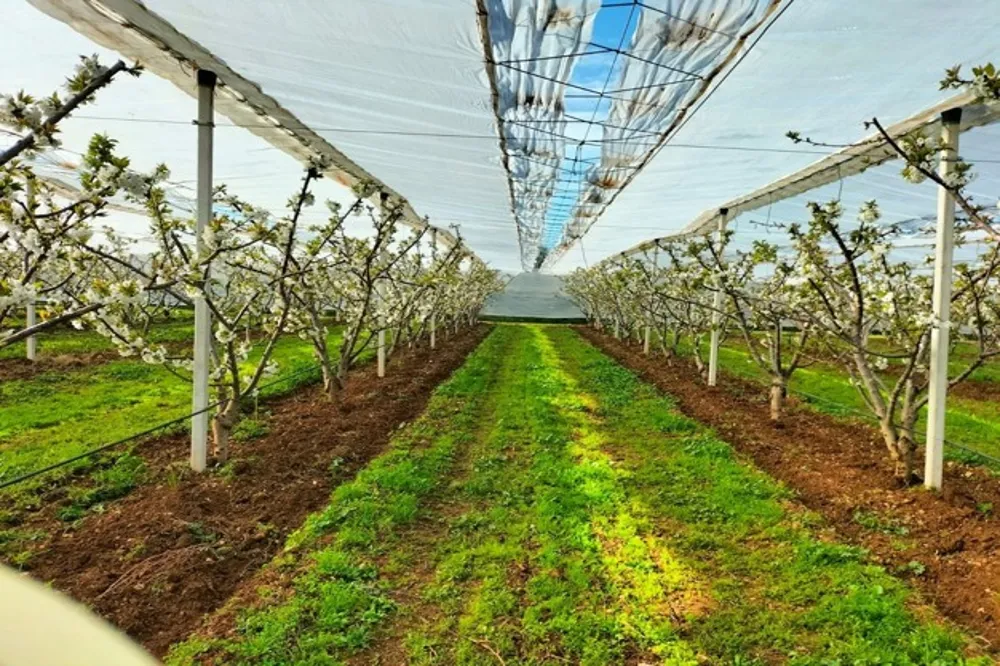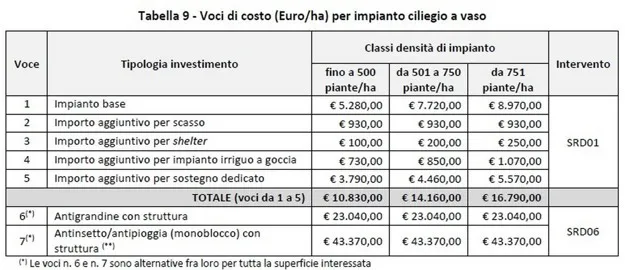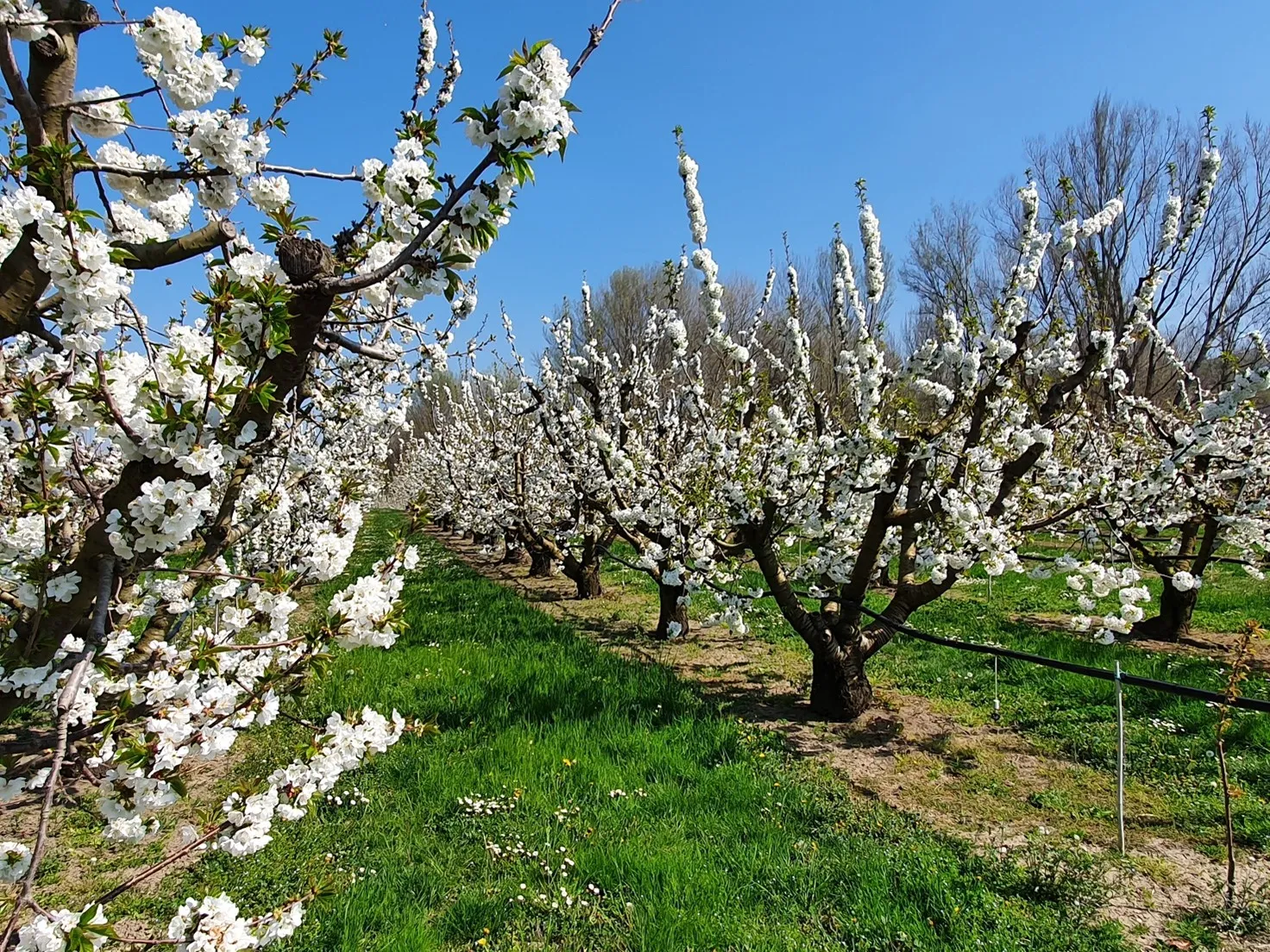Fruit growers now have the opportunity to modernize their crops thanks to protection systems and dedicated financing. According to Agromnia, a consulting company specialized in agronomy based in Puglia, active for over 25 years and composed of 12 professionals, it is essential to consider installing covers for cherry trees.
These systems allow advancing or delaying ripening, while simultaneously protecting the fruit from adverse weather events and invasive pests such as Drosophila suzukii and the cherry fruit fly.
Investments and benefits
 Figure 2: Cherry tree tensile structure with ventilation corridorTraditionally, cherry cultivation has not adopted large-scale protective systems, but climate change and new market demands have increasingly pushed producers to invest in modern coverings.
Figure 2: Cherry tree tensile structure with ventilation corridorTraditionally, cherry cultivation has not adopted large-scale protective systems, but climate change and new market demands have increasingly pushed producers to invest in modern coverings.
However, handcrafted systems are still widespread, often over 5 meters (16 feet) high and vulnerable to wind gusts.
Investing in covered cherry orchards offers tangible advantages: an increase in profitability, with one hectare of protected trees providing the yield equivalent to eight hectares cultivated in open fields, based on an average of five seasons.
Additionally, producers can extend the harvest even in unfavorable weather conditions and obtain higher quality fruit, with larger cherries (+20% in size), shinier surfaces, and more intense color.
Available funding
 Figure 2: Maximum recognized expenditure breakdown
Figure 2: Maximum recognized expenditure breakdown
Agromnia highlights the launch of three financing programs, including one specifically for the cherry supply chain. Intervention SRD01 covers up to 100% of expenses for new protection systems, while Intervention SRD06 provides non-repayable grants from 60% to 80% for agronomic improvements.
In Puglia alone, around 30 applications have already been submitted. For the cherry sector, €10 million is allocated to Intervention SRD06 and €4 million to SRD01, with projects allowed for a maximum area of two hectares.
Incentives for table grapes
Table grapes also benefit from dedicated incentives, with a focus on varietal conversion, which has become particularly widespread in Puglia over the past 2-3 years.
Together with citrus farming, these sectors can access non-repayable grants from 60% to 80% to renew crops and improve market competitiveness.
Source: FreshPlaza.it
Image source: FreshPlaza.it
Cherry Times - All rights reserved














